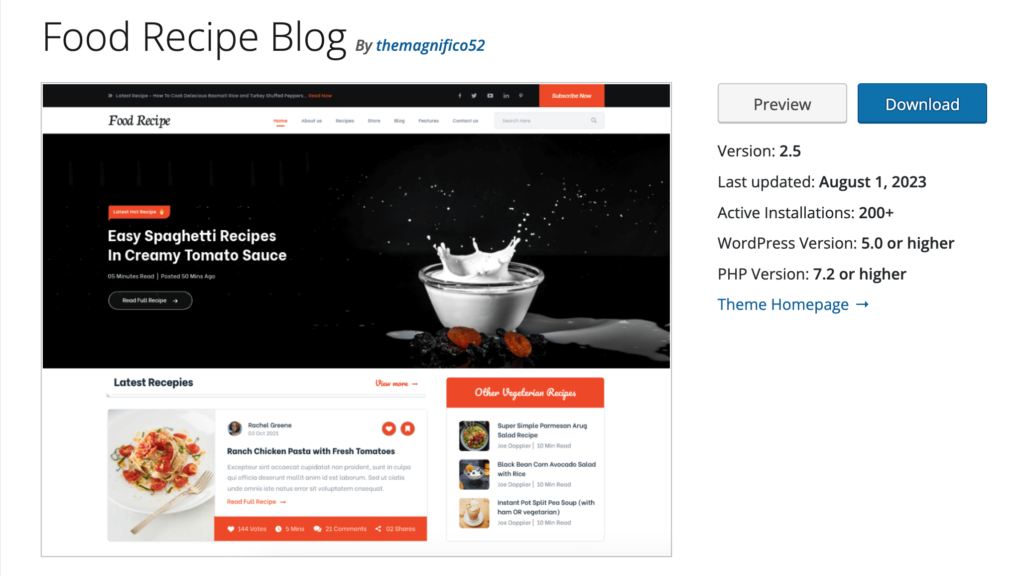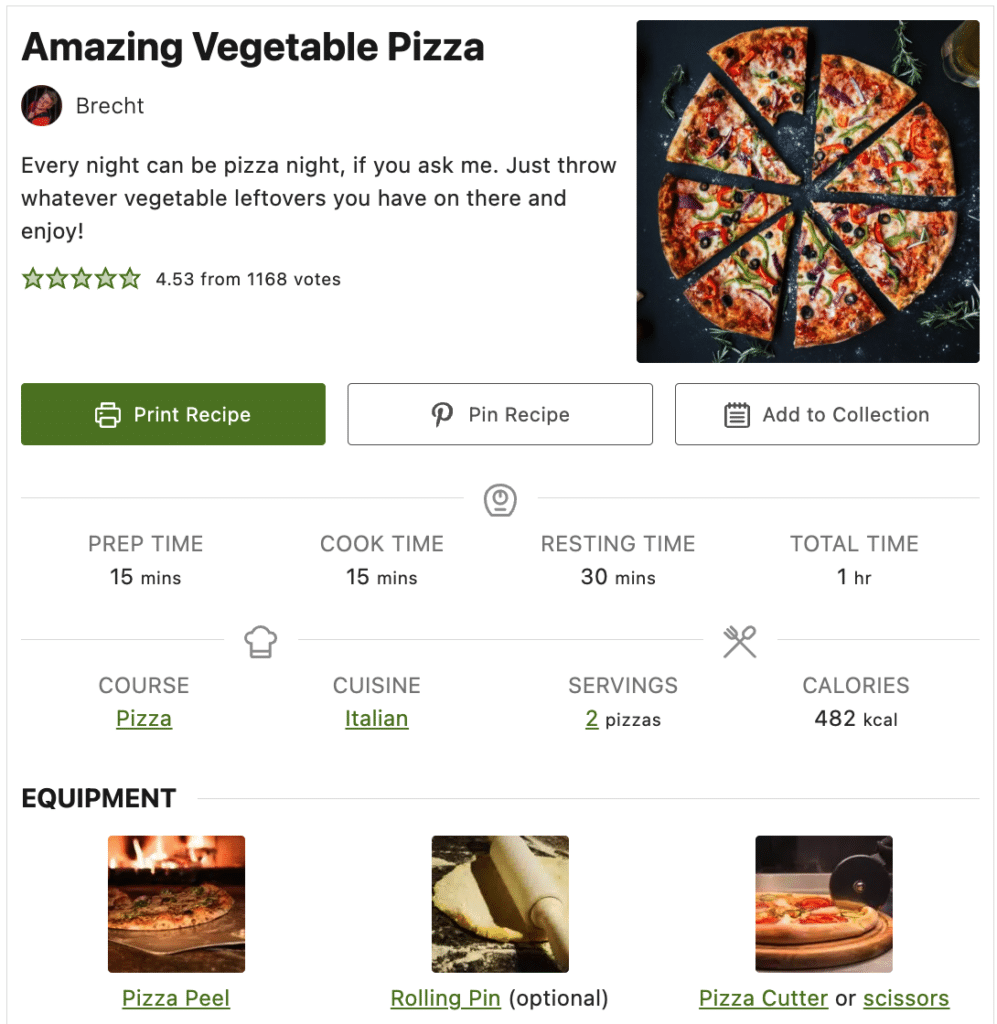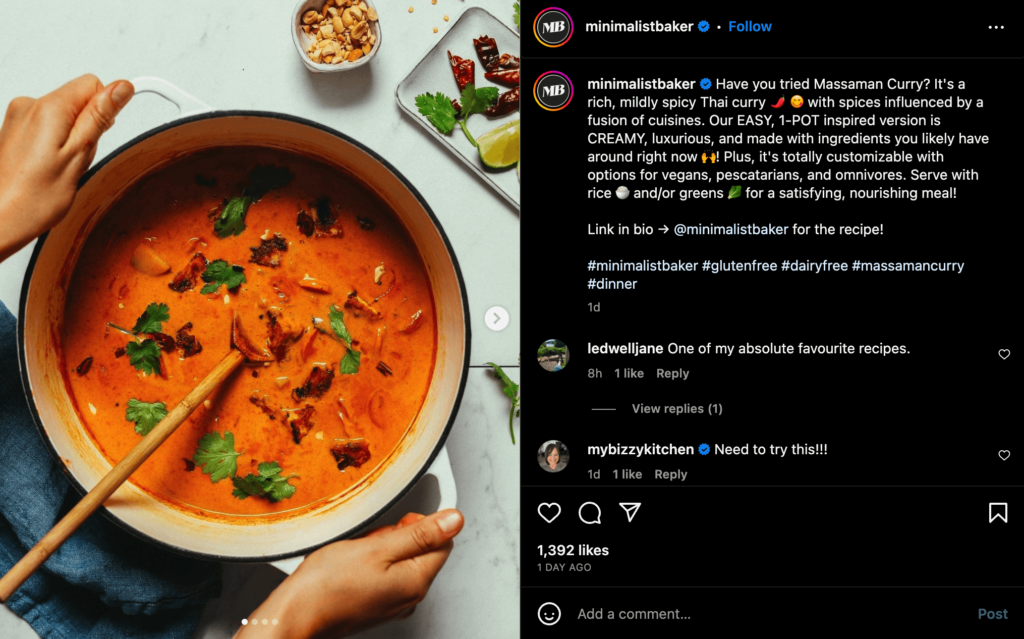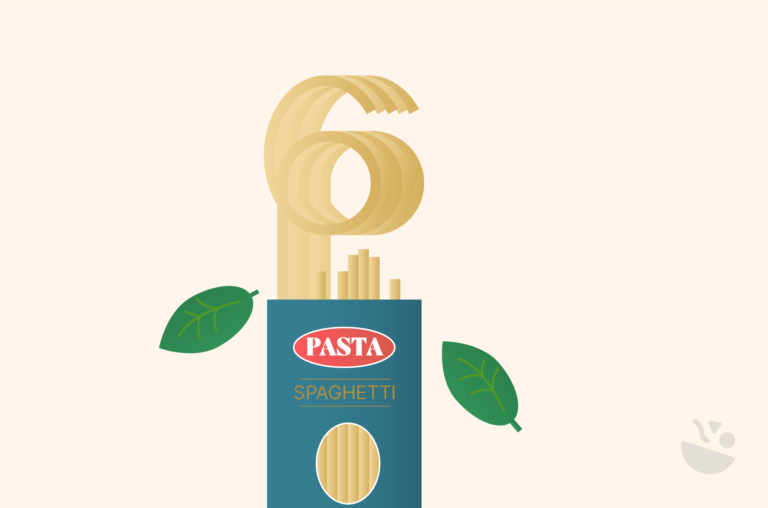“Find a job you enjoy doing, and you will never have to work a day in your life.”
– Mark Twain
Turn your cooking passion into profit by launching a food blog, selling homemade goods, or even creating specialty products. This guide explores five proven money-making strategies for food enthusiasts, from home kitchens to online businesses, with practical steps and expert insights to get you started.
1. Choose a profitable food business model
Before diving into business models, a common question aspiring food entrepreneurs ask is about profitability. What type of food makes the most money? Here are the most profitable food items to sell:
- Specialty baked goods: Custom celebration cakes (50 to 60% margin), artisanal bread and dietary-specific desserts (gluten-free, vegan) (10 to 15% margin).
- Gourmet sauces and preserves: Small-batch hot sauces (up to 60% margin), unique jam flavors, and specialty condiments.
- Custom meal prep services: Keto meal plans (20 to 25% margin), vegan ready-to-eat meals, high-protein fitness meals.
- Specialty snacks and beverages: Artisanal popcorn (20 to 25% margin), flavored nuts, kombucha, and fresh pressed juices.
The good news: many of these high-margin items can be produced in a home kitchen with minimal equipment. Home-based production offers lower overhead costs, flexible production schedules, and the ability to test recipes at a small scale before investing in larger quantities.
Explore a range of food business ideas
Let’s examine the most profitable business models based on investment levels. If you’re operating on a smaller scale, we have compiled an extensive list of food business ideas with small capital investment required that you might enjoy, but we recommend reading our list below anyway for more ideas for inspiration!
Low-cost ideas
- Food blogging: Create your own little foodie universe and monetize your knowledge of gastronomy. With median monthly incomes reaching $9,169, bloggers typically earn through advertising (42-44%), courses, brand partnerships, and affiliate marketing. Most see initial earnings ($100-300) around 6-12 months, reaching $1,000-3,000 monthly after 1-2 years.
“Many other bloggers invest three solid years blogging prior to making $20,000 – $40,000 annually.”
– Brett Lindenberg’s Testimonial, founder of the food blog Food Truck Empire.
- Selling homemade food: Begin by selling to people close to you and then gradually up the production to participate in farmers’ markets and local shops.
Medium-cost ideas
- Catering: Professional caterer Aaliyah Patel reports average profits of $50.000 with successful marketing bringing bookings weeks in advance. Create an enticing custom menu that will help you stand out from the competition and even think of unique dishes to offer with your services, making clients return for more.
- Creating recipe books: If you’re a creative soul who loves experimenting with food and has a knack for writing, you should consider self-publishing. You go for the traditional printed cookbook or a digital cooking book. Digital and print cookbooks bring $50-1,000 monthly per book.
“Last year we made $700 from electronic sales of a book published in 2012 (and another $2,250 from print sales).”
– Jason Logsdon of Amazing Food Made Easy
High-cost ideas
- Food truck: A mobile kitchen can be very profitable, with a profit margin of around 6.2% and an income between $24,000 and $153,000 per year. It also offers flexibility that a restaurant or a café cannot. You can buy a van to remodel it or go with a food truck that already has all the necessary kitchen equipment.
- Eatery/restaurant: Though challenging (Kitchen Nightmares has some very intriguing examples), with experience and imagination, it can become profitable long term.
Be aware of food regulations and permits
Each region has specific requirements:
- United States: Cottage food laws vary by state but generally allow home-based production of shelf-stable foods like baked goods, jams, and candies.
- United Kingdom: Your food business registration is required by the Food Standard Agency 28 days before starting operations. Home kitchens must meet specific hygiene standards and are inspected after registration.
- European Union: All require registration with local health authorities and compliance with EU food safety regulations.
You’ll need to research the legal requirements, follow the local food safety standards, and obtain the necessary permits through your local health department. You will need these permits only if you’re directly serving food to people – food bloggers and authors, you’re safe!
Conduct comprehensive market research
Making the decision to start a food business is just the beginning. Before launching, conduct thorough research including:
- Identifying a target audience. Gather demographic data about your target market and their preferences, needs, and purchasing habits.
- Analyzing the competition. Learn from others’ successes and mistakes to find your unique position.
- Assessing the demand. Use focus groups, surveys, and social media polls to gain feedback on your concept.
Setting up a home food business
To set up your home kitchen, start by creating a dedicated food preparation area with easy-to-clean surfaces and good ventilation. Invest in quality tools appropriate for your products and proper storage solutions. Take a food safety certification course and maintain strict protocols, especially for allergen-free products.
For business management, start with basic systems – spreadsheets for inventory tracking and accounting software for finances. Don’t forget food business insurance, as home policies typically don’t cover commercial activities.
Best ways to sell food
The most successful food businesses combine multiple sales channels:
- Direct-to-consumer through farmers’ markets and food fairs offers the highest margins.
- Online platforms like Etsy or Facebook groups reach broader audiences.
- Local partnerships with cafes and specialty stores provide steady income.
- Subscription services like food boxes create predictable revenue with easier inventory planning.
2. Build an online presence
While various sales channels drive your food business forward, your online presence connects them all. The Internet has the power to turn any small business into a profitable money machine. You just need to know how to harness its powers.
Develop a brand
Beyond a logo and colors, your food brand must tell your story. What makes your recipes unique? Why should customers trust your kitchen? Create a consistent voice that reflects your food philosophy. Ensure that both online and offline touchpoints use the same visual elements.
Spend some time brainstorming, and make sure you’re delivering a unique and memorable experience to every potential customer.
Create a website
Unless you’re a web developer, opt for a user-friendly platform like WordPress with customizable themes for food businesses. For food sites, include:
- Food safety information: Allergen lists and handling procedures that build trust.
- Delivery parameters: Clearly defined delivery radius and shipping limitations.
- Mobile-friendly design: Essential as over 70% of food orders come through mobile devices.
- User-friendly ordering system: Display your menu, prices, and delivery options clearly.
Professional food photography is crucial. You don’t need expensive equipment – a recent smartphone, natural lighting, and simple props can create appetizing images. Use these simple tips:
- Shoot in natural daylight near a window.
- Use white plates to make food colors pop.
- Take photos from multiple angles, especially 45-degree angles.
- Keep backgrounds simple and clean.

WordPress plugins enhance functionality, particularly WP Recipe Maker, which creates interactive, user-friendly recipe cards with these essential features:
- Display ads for additional revenue.
- Adjustable servings that recalculate ingredients automatically.
- Ingredient images that can be toggled on/off.
- Affiliate links that generate a commission from recommended equipment.
- Share buttons for social media sharing.
- Recipe metadata for SEO optimization.
- Nutrition labels for health-conscious readers.

If selling online, integrate an eCommerce option like WooCommerce to keep all business aspects in one place, as The Minimalist Baker does with their recipe blog and product shop.

Implement best SEO practices
For food businesses, SEO requires specialized strategies:
- Include ingredients, methods, and cuisine types in page titles. “Authentic Thai Green Curry with Fresh Lemongrass” outperforms just “Thai Curry Recipe.”
- Add recipe-structured data for rich results with images and ratings. WP Recipe Maker’s Recipe Metadata Checker handles this automatically.

- Incorporate seasonal and local terms like “Small-batch pumpkin spice cookies [your city]” during appropriate seasons.
- Use food-specific keyword research tools like Google Keyword Planner or Ahrefs to find long-tail terms with clear intent – “keto-friendly meal prep delivery Manhattan” will bring more qualified traffic than just “meal prep.”
- Create content that matches search intent – recipes with detailed instructions, catering sites with event photos, meal prep services with nutrition information.
Take advantage of social media platforms
Social media isn’t just about posting pretty food pictures – it can transform your business. Devon McConville, owner of First Place Coffee in Phoenix, grew her sales by 550% through strategic social media use, increasing from 36 to 130 transactions per four-hour period by posting customer photos and tagging them.
Focus on platforms where food thrives:
- Instagram: Create content that showcases your food process and final products. Share behind-the-scenes kitchen moments, ingredient selection, and plating techniques. Use Instagram Stories to post daily specials or limited-time offers, and Reels to demonstrate quick cooking tips or recipe variations.

- TikTok: Focus on quick, engaging videos that highlight your unique food preparation methods. The platform’s algorithm favors authentic content – show your genuine passion for cooking rather than overly polished productions. Successful food businesses often go viral by sharing simple cooking hacks or satisfying food assembly videos.
- Facebook: Join and participate in local food groups where your target customers gather. Share your weekly menus, special offers, and customer reviews. Use Facebook’s shop feature to list your products and accept orders directly. Create events for pop-ups or special menu launches to build anticipation.
Maintain consistent branding across all platforms and posting schedules, interact regularly with your audience, and encourage user-generated content by asking customers to tag your profile when they try your recipes.

3. Network and collaborate in the food industry
Collaboration is the key to success, so let’s see your options.
Other food influencers and bloggers
Begin by identifying 10-15 influencers with complementary (not competing) offerings. If you sell homemade jams, partner with bakers who could use your products. When reaching out, lead with specific value – offer products for their photoshoots or create exclusive recipes featuring both your specialties.Propose defined collaboration ideas like recipe swaps, joint Instagram Lives, cooking videos, co-written cookbooks, or bundled product offerings for holidays.


A relationship like this will not only increase your audience but also immensely help you gain more experience in the industry and help you promote any products you want to sell.
Work with food brands and eateries
Collaborating with food companies is a great way to earn money and increase your audience.
- Affiliate programs: Earn commission when readers purchase products through your unique links from companies like Amazon. WP Recipe Maker makes it easy to add equipment affiliate links to recipes.

- Synergistic partnerships: You can also seek complementary food brands or eateries for cross-promotions, collaborations, giveaways, or limited-time menu items.
- Local collaborations: Approach cafes and specialty stores with samples and clear partnership proposals. Start with smaller independent shops where managers have purchasing authority.
Network at food events and markets
Research specialized food markets in your area and visit as a customer before committing to booth fees. Prepare business cards, wholesale information, and collaboration proposals to maximize networking opportunities.
Both virtual events (online food festivals, webinars, cooking classes) and in-person events (food festivals, tasting events, cookbook launches) allow direct audience engagement. Approach each with clear goals – collecting contacts, forming industry relationships, or making direct sales.
4. Validate your business idea before scaling up
Starting small is vital for any food business. While jumping into deep waters is tempting, be cautious with your budget and avoid risky investments.
Adopt a lean approach
Focus on perfecting 3-5 signature products rather than developing 20 different items. Document each iteration with photos and tasting notes. For home kitchen businesses, carefully measure preparation time and ingredient costs – Lisa He of Borderlands Bakery discovered her decorated sugar cookies weren’t profitable at $55/dozen when she tracked that each dozen required 3 hours of hands-on time, resulting in just $16.58 per hour before accounting for supplies and overhead costs.
Be resourceful with equipment – opt for quality second-hand items or borrow from friends and family for initial testing. For food blogs, carefully select only essential plugins and tools.
Begin with small-scale operations
Starting small allows you to gather valuable insights through structured “minimum viable product” tastings. Many successful food entrepreneurs begin by hosting focused tasting sessions with feedback sheets covering flavor, texture, and presentation. Understanding your production capacity will come naturally as you time batch preparations and identify potential bottlenecks.
For delivery businesses, map test routes to determine realistic delivery zones, offer products at local markets or online platforms to gauge interest without major resource commitments. Focus on perfecting recipes, presentation, and service quality during this testing phase.
Promote limited-time offers
Test launches can help gauge market interest while building excitement. Limited-time offerings give you the opportunity to assess preparation time, costs, and customer response before scaling up.
Use pre-orders to validate demand before production – requiring a minimum number of orders before making specialty items eliminates waste while confirming market interest.
Get client feedback
Customer feedback becomes a valuable guide when collected thoughtfully. Food-specific feedback forms and blind tastings can reveal important insights about flavor balance, portion sizes, and packaging effectiveness.
Track feedback patterns rather than one-off comments – when multiple customers mention similar issues (like “too sweet” or “difficult packaging”), prioritize these adjustments.
Once you have it, act on it! No matter your business, your motto should always be “constant improvement”.
Analyze sales and marketing data
Analyze your sales data to identify your best-selling items/most-read recipes or blog posts. This will help you understand which products are the most profitable and what type of content people look for.
Monitor detailed food-specific metrics like:
- Seasonal sales fluctuations (vital for temperature-sensitive products).
- Natural pairings that emerge from customer purchasing habits (which items customers buy together).
- Shelf life versus sales velocity (how quickly products sell relative to freshness window).
- Repeat purchase rates by product variety (which flavors create loyal customers).
- Use inventory turnover rates to identify your most successful products.
Since we’re talking about food, there will also be seasonal demand patterns for specific food items that you need to pay attention to. Plan your inventory and food marketing strategies accordingly to capitalize on peak seasons.
5. Diversify your revenue streams
Creating multiple income sources is essential for long-term success in the food industry.
Home-based revenue opportunities
Your recipes can become valuable digital products, from premium collections to meal planning services, requiring minimal ongoing costs. Monthly subscription services create reliable income and predictable inventory planning – create your own signature offering like a “Cookie of the Month” club with different flavors delivered automatically, similar to what companies like Goldbelly have successfully implemented with their subscription programs.
Offer virtual cooking classes showcasing your signature techniques, which can be conducted from your home kitchen with minimal additional equipment.
Custom and specialty services
Provide personalized menu planning for customers with specific dietary needs – this requires no additional kitchen equipment but leverages your expertise. Many successful food entrepreneurs charge $75-150 for customized meal plans. Create seasonal special offerings like limited-edition holiday packages that generate excitement and command premium prices.
Consider DIY kits containing premeasured ingredients and instructions for customers to recreate your specialties at home. Develop custom order capabilities for special occasions like birthdays or corporate events.
Professional food-related services
Your culinary knowledge and skills can generate income beyond food production. Consider these professional services:
- Recipe development: Brands typically pay $250-$500 per recipe, with dietary specialists commanding higher rates.
- Food photography: Home-based food creators often offer photography services to other businesses at $150-$300 per session.
- Consulting and teaching: Monetize your expertise through classes or business startup consulting at $50-$150 hourly.
Local partnership opportunities
Establish delivery services with neighboring food businesses to share costs and expand reach. Create “bundle” offerings with complementary food producers to offer complete meal solutions. Leverage your expertise through consulting or training – help other aspiring food entrepreneurs navigate permits, photography, or marketing.
The most resilient food businesses maintain a balanced mix of product sales, services, and digital offerings to sustain through seasonal fluctuations and market changes.
Turn your food passion into profit with WP Recipe Maker
Whether you’re starting a home-based food business or growing an existing one, having the right digital tools is crucial for monetization. WP Recipe Maker helps food entrepreneurs create multiple revenue streams:
- Affiliate income: Easily integrate equipment and ingredient affiliate links into your recipes.
- SEO revenue: Boost organic traffic with recipe-specific structured data that Google loves.
- Content monetization: Place targeted ads within recipe cards for passive income.
- Digital products: Create premium recipe collections and meal plans that customers can purchase.
Even if your primary business isn’t blogging, sharing recipes can be a powerful marketing tool. Restaurants, caterers, and food producers can use recipe content to build authority, attract customers, and create additional income streams.
Ready to transform your food expertise into profit? Get WP Recipe Maker and start building your food empire today.






